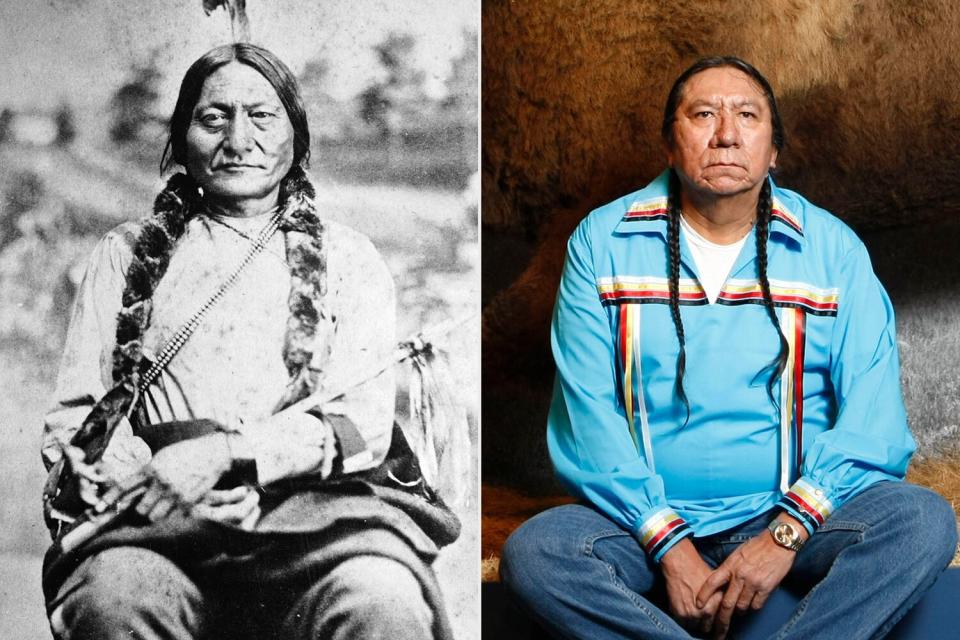Scientists Identify Man as Sitting Bull's Great-Grandson by Analyzing Lock of Hair

O.S. Goff/Hulton Archive/Getty; AP Photo/Joerg Sarbach
A great-grandson of the Native American leader Sitting Bull has been identified using DNA from a lock of hair.
In a paper published in the journal Science Advances, researchers named 73-year-old Ernie LaPointe as the closest living descendant of Sitting Bull, the Lakota Sioux leader who famously led Native American forces to a victory over General George Armstrong Custer in the 1876 Battle of the Little Big Horn.
Researchers from the University of Cambridge confirmed LePointe's lineage using a lock of hair taken from the chief shortly after his death in 1890.
"To our knowledge, this is the first published example of a familial relationship between contemporary and a historical individual that has been confirmed using such limited amounts of ancient DNA across such distant relatives," the researchers said in a statement. "Hence, this study opens the possibility for broadening genealogical research, even when only minor amounts of ancient genetic material are accessible."
The lock of hair that was examined was taken "without any permission or authority whatsoever" by a post surgeon at Fort Yates before Sitting Bull's burial, the researchers said. The hair, along with cloth leggings, were then loaned to the Smithsonian Institution in 1896.
RELATED: Chief of Cherokee Nation Calls on Jeep to Stop Using Tribe's Name: 'It Does Not Honor Us'
The museum then gave the items to LaPointe and his three sisters in 2007, at which point a part of the hair lock was burned in a ceremony. Scientists were able to analyze a piece that had been saved for study.
It took 14 years for scientists — led by Eske Willerslev, director of the Lundbeck Foundation GeoGenetics Centre at the University of Cambridge — to develop a way to extract useable DNA from the piece of hair.
LePointe, of South Dakota, told Reuters that the findings from the study will help him silence those who had doubted his claims as a descendant of Sitting Bull.
RELATED: Calif. Native American Tribe Reclaims Ancestral Land Stolen 250 Years Ago: 'The Highest Honor'
"I feel this DNA research is another way of identifying my lineal relationship to my great-grandfather," said LaPointe, who had previously used death certificates and a family tree to prove his relationship to Sitting Bull. "People have been questioning our relationship to our ancestor as long as I can remember."
"These people are just a pain in the place you sit — and will probably doubt these findings, also," he added.
RELATED VIDEO: Alaqua Cox Beat the Odds to Become Marvel's Next Big Star: "I Feel So Overwhelmed By Support"
The confirmation may also help LaPointe in his quest to determine a location for Sitting Bull's gravesite.
There are currently two places where people can pay tribute to Sitting Bull, with one located Fort Yates in North Dakota, and the other at Mobridge, South Dakota.
LaPointe believes Sitting Bull's bones are in Mobridge, an area where the chief had no significant connection. He hopes to bury his great-grandfather's remains in a more suitable place.

 Yahoo Finance
Yahoo Finance 